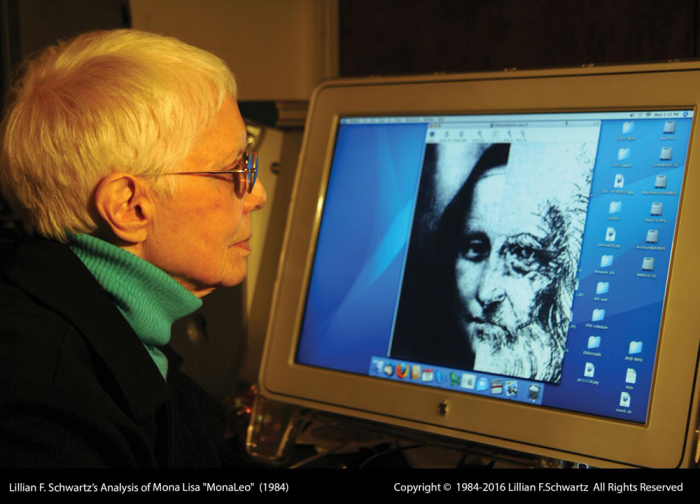Lillian Schwartz
Lillian Schwartz

Lillian Schwartz is the most-honored pioneer in computer-assisted art, animation, and analysis, while tying together the disparate parts of a computer system into a singular tool kit for artists and scientists. Her awards include the first Emmy for a complex computer-assisted television commercial for the Museum of Modern Art, an Emmy nomination, numerous Golden Cine Eagles, and appointment in the 1970s–1980s as the United States’ goodwill ambassador, lecturing worldwide on technology and creativity. Her countless exhibits were in almost every country and in major museums. In 2015, she won the ACM/SIGGRAPH Lifetime Achievement Award and, in 2016, the same from the New Jersey Institute of Technology. She worked extensively with famous scientists at Bell Labs, helping them with programming, color shifts, and engineering. In return, she had many firsts using science. In 1968–1969, she did the first computer-controlled lasers to etch graphics—a technique that evolved into MUTATIONS, the first film based on computer-aimed lasers (music by Jean-Claude Risset, a long-time collaborator). In 1969–1970, she invented 2D/3D without pixel shifting animation based on proprietary techniques using a select number of colors pushed to their saturation threshold edited in a special manner thereby controlling the viewer’s sense of motion, depth, and luminance. 3D had always fascinated her—her use of acrylics on plastic sheets aligned on a light box to her use of scientific techniques to paint 2D slides that, when projected onto a globe, became 3D (Proxima Centauri, shown at MoMA and 9 Evenings). In analysis, she used objective alignment programs along with years of archival research to prove that da Vinci used himself as the final model for the Mona Lisa. At the age of 89, blind in one eye, and suffering from illnesses such as post-polio syndrome, she still works on projects.



